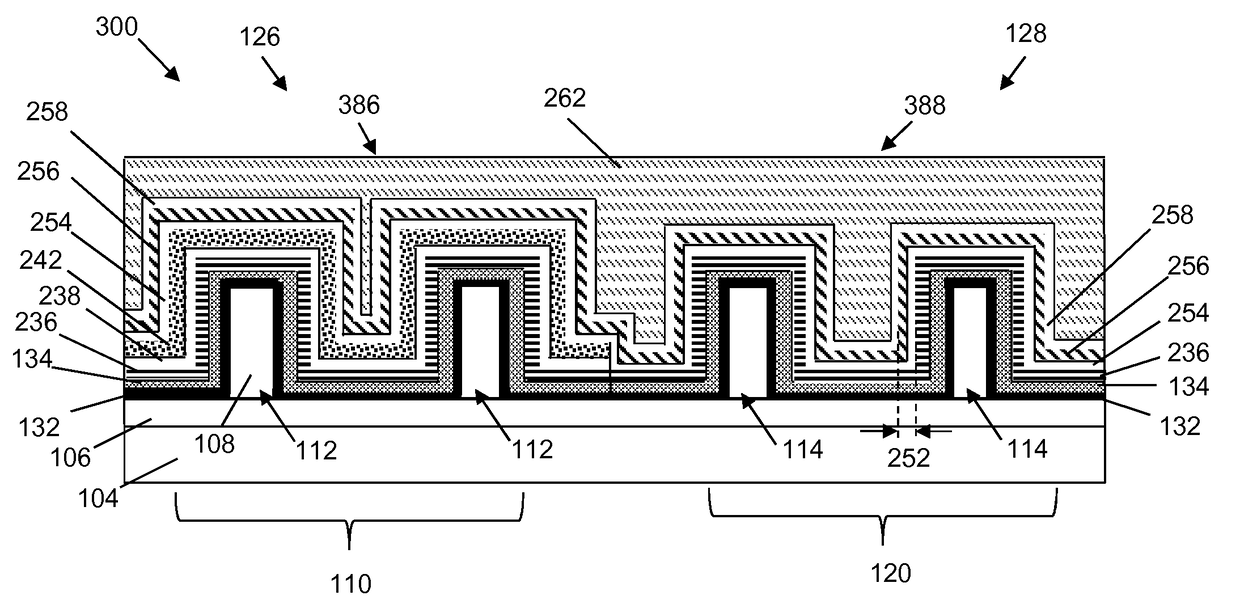Integrated circuit with replacement gate stacks and method of forming same
a technology of integrated circuits and gate stacks, which is applied in the field of gate stacks, can solve the problems of reducing the drain current and transconductance of the integrated circuit, increasing the threshold voltage, and chlorine (cl) and fluorine (f) are not compatible to improve the nbti simultaneously
- Summary
- Abstract
- Description
- Claims
- Application Information
AI Technical Summary
Benefits of technology
Problems solved by technology
Method used
Image
Examples
Embodiment Construction
[0013]Aspects of the present disclosure are directed to gate stacks, and more particularly, to replacement gate stacks for p-type field-effect transistors and n-type field effect transistors and methods of forming the same. Specifically, the gate stacks of the present disclosure includes using at least one of a chlorine (Cl)-doped tungsten and a pure tungsten (W) as precursor for a gate electrode. Therefore, the present invention does not include the use of fluorine (F) as a precursor for a gate electrode thereby improving the gate resistance, the negative bias temperature instability (NBTI), and the performance of the integrated circuit.
[0014]Aspects of the present invention are shown and described with respect to a fin-shaped field-effect transistor (FINFET). However, it is to be understood that aspects of the present invention are equally applicable to other types of transistors, such as planar transistors.
[0015]FIG. 1 shows an IC structure as a FINFET 100 that has undergone prel...
PUM
| Property | Measurement | Unit |
|---|---|---|
| thickness | aaaaa | aaaaa |
| wetting | aaaaa | aaaaa |
| current | aaaaa | aaaaa |
Abstract
Description
Claims
Application Information
 Login to View More
Login to View More - R&D
- Intellectual Property
- Life Sciences
- Materials
- Tech Scout
- Unparalleled Data Quality
- Higher Quality Content
- 60% Fewer Hallucinations
Browse by: Latest US Patents, China's latest patents, Technical Efficacy Thesaurus, Application Domain, Technology Topic, Popular Technical Reports.
© 2025 PatSnap. All rights reserved.Legal|Privacy policy|Modern Slavery Act Transparency Statement|Sitemap|About US| Contact US: help@patsnap.com



